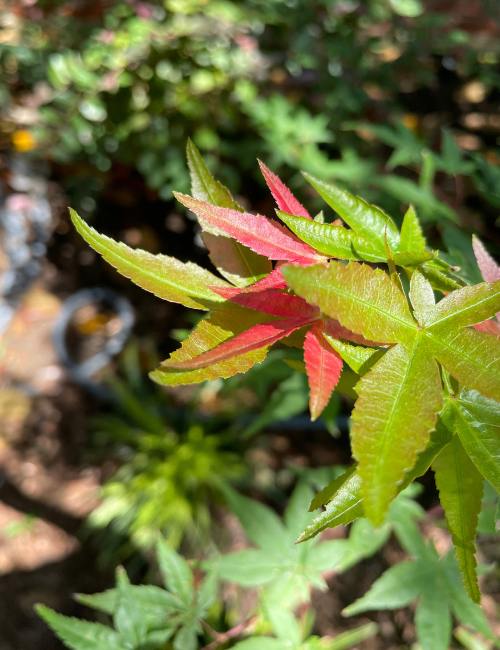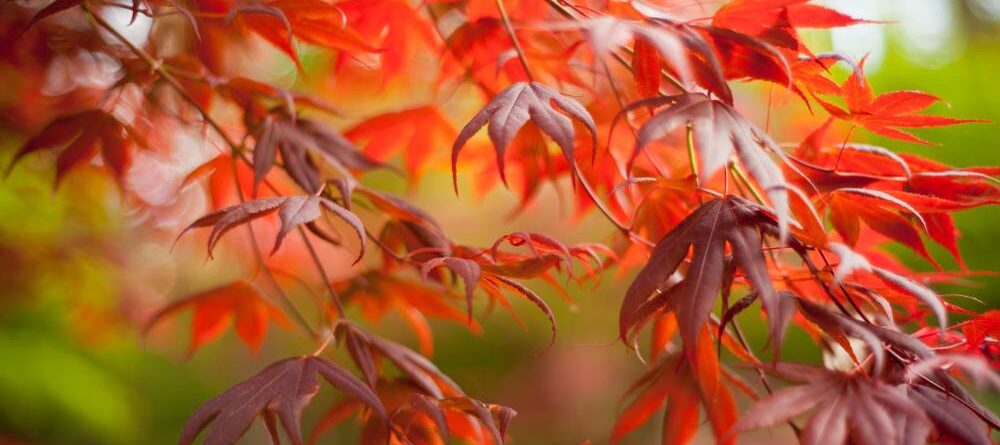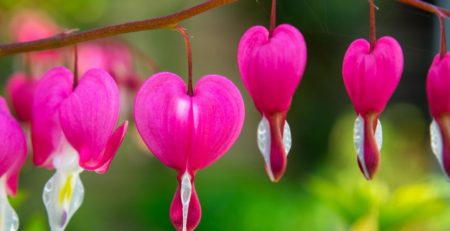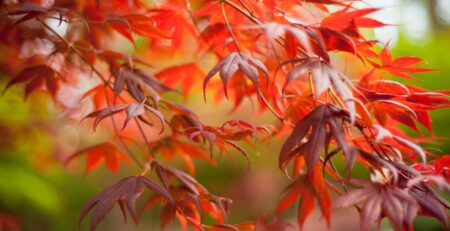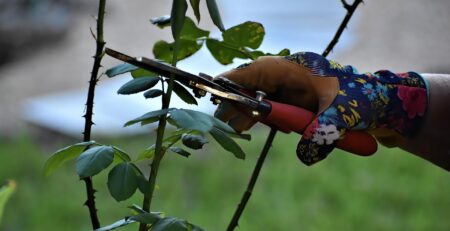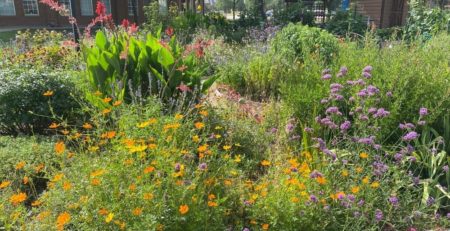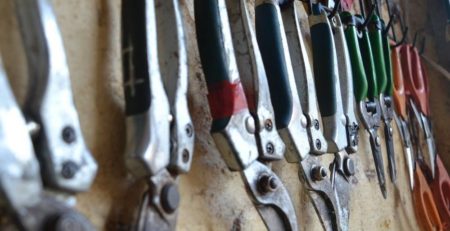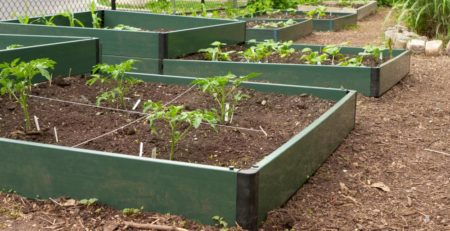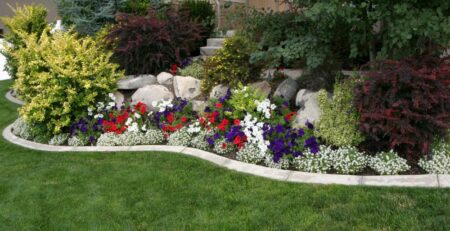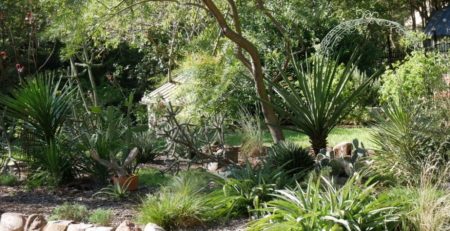The 2023 Japanese Maple Sale
The Dallas County Master Gardeners’ Japanese maple tree sale is coming in October. Fall is the perfect time to plant a new tree so get ready to add one or two to your garden. This same fundraising sale was held the last two years, and the trees sold out almost as soon as they were posted for sale. Approximately 125 trees in one and two-gallon nursery pots will be offered this year. These are small trees that will do well in a container until you find a place for them in your garden. In fact, many of them would be perfectly happy in containers for several years. Or, you can certainly go ahead and plant them in the ground. They are surprisingly easy to transplant their first year or two, so you would be able to change your mind and relocate them later.
Those who grow Japanese maples know the attraction. I confess I have over fifty at this writing, some as short as 12” tall and others that are 12-14 feet in height. The trees are best grown as understory trees, and if you have a large tree shading your landscape you might want to consider creating a little island area in that shady spot for a beautiful weeping Inaba-shidareor Tamukeyama. Both cultivars have very lacy leaves and do well with morning sun and afternoon shade.
One popular tree that grows upright and faster than most is Sango kaku, also known as coral bark. It develops gorgeous shrimp-colored bark in the winter, particularly during very cold snaps. It has beautiful green palmatum leaves in the summer and grows in an attractive shape to 14-16 feet in height with a width of 10-12 feet. This is a tree to place so that it can be seen through the windows during the winter because with that red bark it is as attractive without leaves as it is in the summer. The fall leaf color is yellow, red, and gold. A similar coral bark tree that is included in the sale is Beni-kawa.
There also is a surprise non-Japanese maple entry in the sale this year, the Ginkgo Saratoga. The majestic leaves on this tree are more elongated and pendulous than on the typical Ginkgo, and the fall color is an eye-catching brilliant-as-a-stoplight yellow. You will need space for this tree, because even though it is slow-growing, it could reach 30 feet in height with a width of 15 feet in fifteen to twenty years.
There are over 3,000 varieties of Japanese maples in every size and shape imaginable, and many of them have green leaves and not red. Even those that are brilliant red in the spring and fall are often green or bronze during the summer. One of the beautiful green trees is Nanyat, with small curling green leaves that will turn a vivid yellow in the fall. This year’s sale also includes a few very easy-to grow seedling Acer palmatums that are not grafted as a named cultivar, are sun and heat tolerant, and are usually fast growing. The beautiful Ft . Worth Japanese Garden has dozens of these trees scattered throughout and many are large enough to qualify as shade trees.
If your interests lean toward the unusual and rare, the sale will feature several varieties that qualify. One is Mystic Jewel, a tree with unusually-shaped leaves that emerge in the spring in golds and oranges. The leaves turn a silvery green for the summer and in the fall, they will display glorious purple -red shades. This tree will reach 10’ in ten years and you can be fairly confident that unless they purchased it at this sale none of your neighbors will have one.
Dwarf trees being offered this year include a vast array of little wonders. They include Hanami nishiki with its tiny leaves; Katsura hime with a ten-year height of 6’; Koto hime that will have a rounded form of 3’ by 3’ after ten years; Sekka yatsubusa with tight groups of leaves along the branches, maturing at 8’ tall and 6’ wide; and finally, Yuri hime, another little 3’ by 3’ tree with green summer leaves and gold and orange fall color. If you have always liked the Bloodgood Japanese maple but not its size, try Livy, a petite little beauty reaching 6’ in ten years, with purple leaves very similar to those on Bloodgood.
The taller trees being offered this year include Fireglow, Osakazuki, Red Emperor, Shin Deshojo, and Yasemin, as well as others discussed in this article, Sango kaku, Ginkgo Saratoga, and the seedling Acer palmatum. All of these will mature at 10’ and taller and every one of them will give you glorious fall color.
Once home with your new purchase, here are some tips for care and upkeep. First, it is fine to leave it in the nursery pot for several weeks or months. If you choose to plant it in a container, keep the pot size similar to or not more than one size larger than the nursery pot. In other words, it is fine to go from a one-gallon pot to a two-gallon, but not so great to put the little tree in a 3 gallon or larger pot. The roots might remain too soggy if the pot is too large. Use a planting medium of azalea mix or shredded pine bark, or your own special mix as long as it is fast draining. If you are using shredded pine bark mulch, you can stir in a little potting soil. These trees do not demand fertilizer, and if you are planting them in the ground, they should never need to be fertilized. The preparation for planting in the ground is to first research how much shade is required, usually morning sun and afternoon shade. Then dig a hole twice as wide but no deeper than the root ball. Sprinkle in some pine bark mulch or azalea mix and mix some in the soil you will be replacing in the hole, then place your little tree so that the root flare is visible, exactly as it is in the nursery pot. It is never good to plant too deep. Then replace the soil around the root ball and put some mulch on top, again leaving the root flare visible. The soil should be kept moist but never soggy.
The Japanese Maple sale will be held via Sign Up Genius which you can access by clicking here. The link goes active at 8 a.m. on October 1st and continues until October 14th or until all trees have been sold. Pick up will be Saturday, October 21st from 10 a.m. to 2 p.m. at Raincatcher’s Garden (Midway Hills Christian Church, 11001 Midway Rd., Dallas, TX).
A description of the trees available for sale can be found by clicking here.
About the author: Cindy Bolz is a member of the DCMG class of 2013 and has remained very active in the program since that date. She has collected Japanese maples for over twenty years and has featured them in her shade gardens, where there are currently over fifty of them, varying in sizes from tiny 16” trees in pots to some that are over 15 feet tall. She has been involved in the groups’ planning and hosting the Japanese Maple Tree Sales held in 2021 and 2022. Her Asian-influenced shade garden was included in the DCMG 2022 garden tour.
